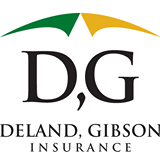At lunch recently I was asking one of my favorite clients his opinion about the state of our country and the idea that manufa cturing might be one of the best ways to help our economy recover. As we chatted about the big issues, such as the role of government in business, the lack of good talent coming into the manufacturing sector, unions, etc., he suggested that I should stick with what I know best for my blog.
cturing might be one of the best ways to help our economy recover. As we chatted about the big issues, such as the role of government in business, the lack of good talent coming into the manufacturing sector, unions, etc., he suggested that I should stick with what I know best for my blog.
He was right. We all have our opinions about what the problems are and why businesses are suffering, but ultimately, I can and should stay within my area of expertise, which is risk management and insurance, especially if I am going to write about it.
Perhaps there is even greater wisdom in his comment than I had first thought. If you have a small business, you can rail against the problems you face or you can make sure you are so efficient and effective that you are profitable, continue to provide jobs for your employees and become the engine that moves the economy forward.
So what does that have to do with risk management? Actually, quite a bit. It is not all about profit, but if you lose your focus because of some unforeseen risk, you could lose your ability to grow, or you mightlose your best employees or you just might lose your business. The statistics bear this out. Only 50% of all businesses that have a large loss (and have insurance) will get back up and running.
Risk may not be avoidable, but it can be mitigated. It can be reduced, controlled or transferred.
That is where risk management and insurance come into the picture. You need to think about your risk of loss in four ways. You should:
R – Review and Analyze what your exposure is to damage, loss, catastrophes, claims, liability. In Massachusetts, you have to think hurricanes, fires, litigation, employees – even tornados!
I – Identify a strategy and a plan to reduce your risk of loss. This might entail calling on colleagues and outside experts for some help. Sometimes just walking around your facility and observing how your staff is functioning can be very revealing. Also, a committee of key employees can surface issues you have not thought of before.
S – Start now to put your plan into action with some deadlines for accountability purposes. Beware of assigning this to someone who already has a full plate. If someone does not “champion” this process, it will not get done.
K – Keep your eye on the prize and revisit your plan regularly to be sure you are on track.
Sounds easy, but it isn’t. Whether it is safety or efficiency in production, HR issues, or cyber exposures, risk analysis and planning is well worth the investment in time and resources. It is the proactive approach to Risk Reduction. The ROI could mean the difference between success or failure and can keep you from using four letter words to describe your insurance and risk management program!

